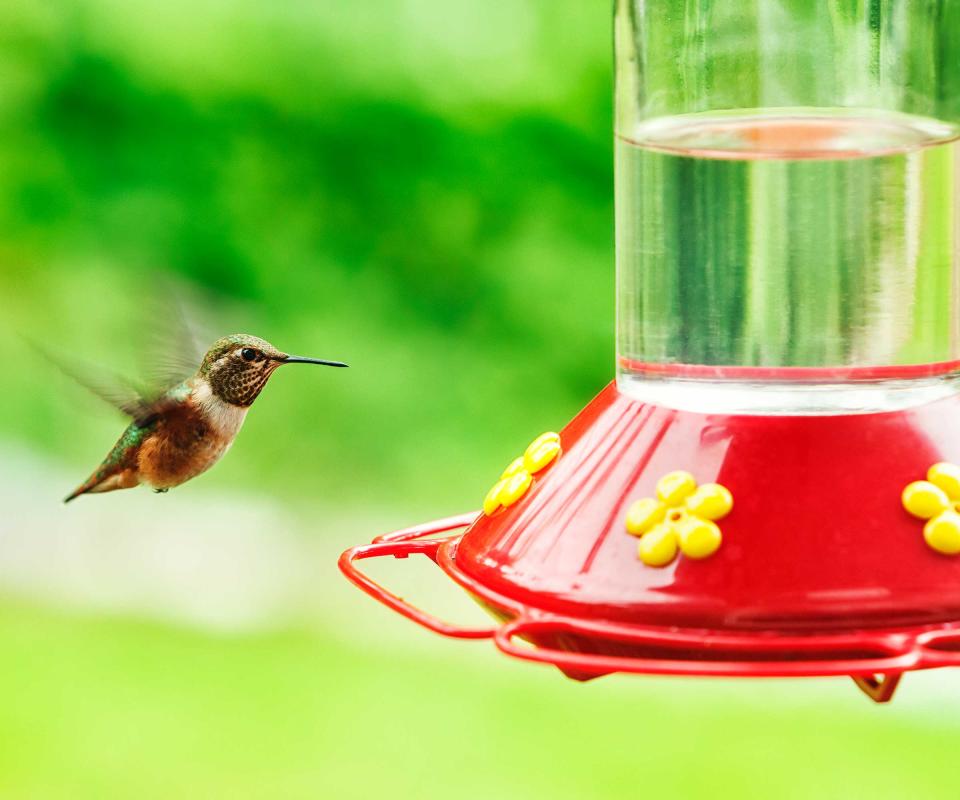How to clean hummingbird feeders – in 6 simple steps

Watching hummingbirds flit to and fro is a delight for all ages. Putting out food for them is one way to attract these feathered friends to your yard, but it's important to keep their feeders clean.
Whether you're filling your feeders with homemade hummingbird food or pre-made nectar bought online (such as Kaytee's hummingbird food from Amazon), these birds would much rather it were fresh (wouldn't we all?). Old nectar served from dirty feeders can be contaminated with mold and other nasties, which can harm the hummingbirds who feed on it.
Luckily, giving the feeders a spruce is easy and doesn't take long. And apart from a bottle brush, you don't need any special equipment: warm water and distilled white vinegar will do the job just fine.

A step-by-step guide to cleaning hummingbird feeders
Follow these simple steps, including tips from Kelsey Waddell, an expert from WildBirdScoop.
Disassemble the feeder and remove any remaining nectar.
Rinse the feeder with hot water to remove any debris.
Scrub the inside of the feeder with a bottle brush or specialized feeder-cleaning brush. It’s helpful to keep different-sized brushes on hand to get into the nooks and crannies of your various feeders, Kelsey adds. Personally, I like the look of this 2-in-1 hummingbird feeder brush from Amazon – a well-rated and budget-friendly choice.
After scrubbing your feeder, Kelsey says to soak it in a solution of one part vinegar to four parts water for at least 30 minutes to disinfect it.
Scrub off any remaining debris. Then, Kelsey says to rinse the feeder thoroughly with clean water, making sure to remove all traces of vinegar.
Allow the feeder to air-dry completely before refilling it with fresh nectar.
You can swap out the vinegar with a squirt of unscented dish soap and a couple of drops of bleach, if you wish. Either way, remember to wear rubber gloves to protect your hands.
'If you have multiple feeders, consider designating a different brush for each feeder to prevent the spread of any potential disease,' Kelsey adds.
It's also a good idea to clean your feeders outdoors in a bucket if possible, rather than in the kitchen sink. Keep your brushes reserved for this task only, too, to avoid the risk of spreading any bacteria that may be lurking.

How often to clean hummingbird feeders
Once you've put out your hummingbird feeder, Kelsey recommends cleaning it at least once a week if you live somewhere with moderate temperatures. However, in very hot climates, you may need to clean it as often as once every 2-3 days as the nectar will start to ferment quicker.
If your feeder is emptied by the birds in the meantime, you should also clean it before refilling it.
A regular spruce of your feeder makes for a safer and more attractive offering to visiting hummingbirds – and will also help to keep bees away from the area. And if you want to make your outdoor space even more inviting for these wondrous creatures, consider planting flowers that hummingbirds love around your yard, too.

